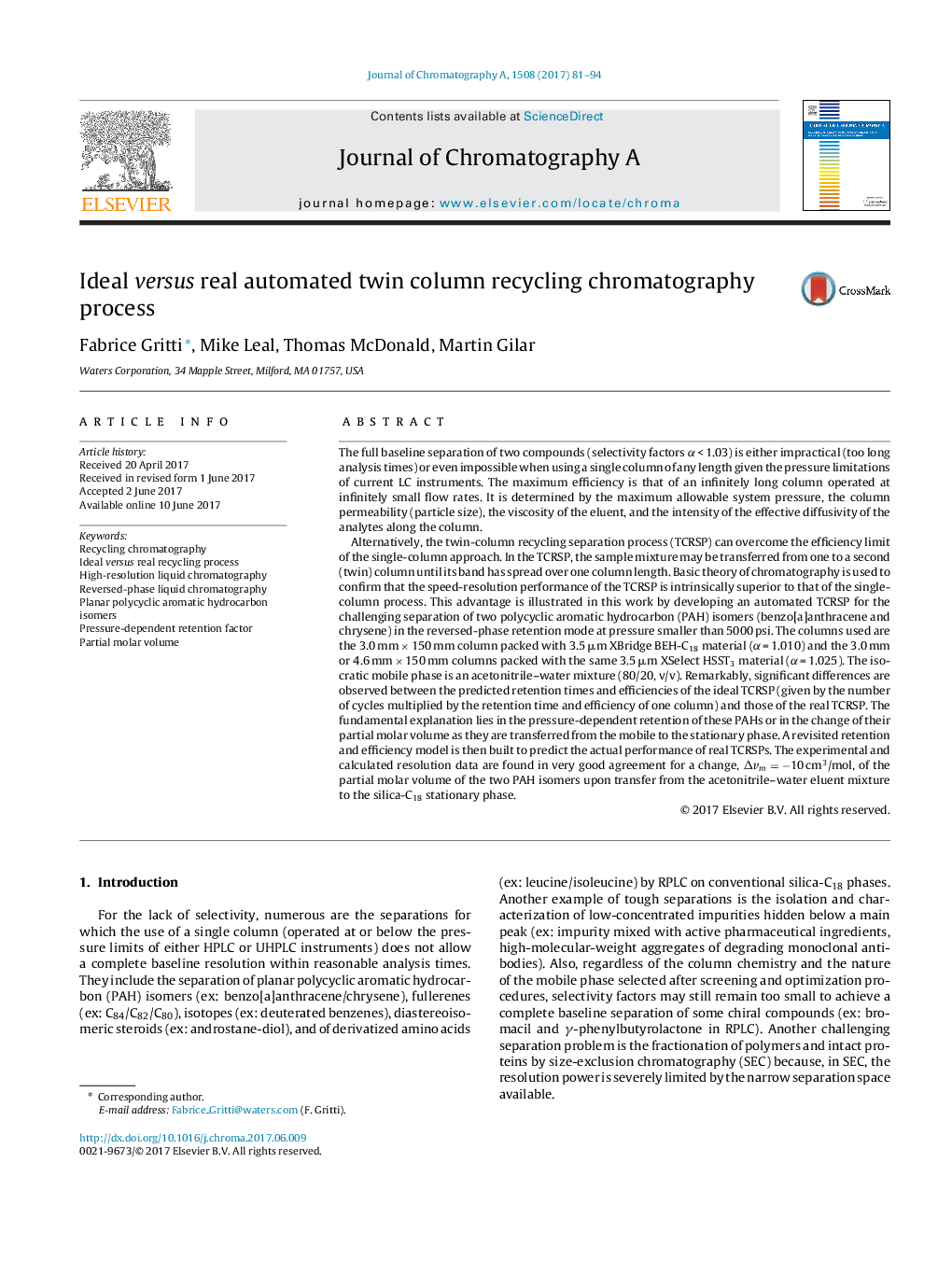| کد مقاله | کد نشریه | سال انتشار | مقاله انگلیسی | نسخه تمام متن |
|---|---|---|---|---|
| 5135109 | 1493418 | 2017 | 14 صفحه PDF | دانلود رایگان |

- A twin-column recycling separation process (TCRSP) device was built for LC separation.
- It is connected and automated by a UHPLC instrument to resolve tough separations.
- The actual performance of the TCRSP deviates from that of the ideal TCRSP.
- This deviation is due to the pressure-dependent retention of the analytes.
- The change of molar volume of benzo[a]anthracene/chrysene isomers is â10Â cm3/mol.
The full baseline separation of two compounds (selectivity factors α < 1.03) is either impractical (too long analysis times) or even impossible when using a single column of any length given the pressure limitations of current LC instruments. The maximum efficiency is that of an infinitely long column operated at infinitely small flow rates. It is determined by the maximum allowable system pressure, the column permeability (particle size), the viscosity of the eluent, and the intensity of the effective diffusivity of the analytes along the column.Alternatively, the twin-column recycling separation process (TCRSP) can overcome the efficiency limit of the single-column approach. In the TCRSP, the sample mixture may be transferred from one to a second (twin) column until its band has spread over one column length. Basic theory of chromatography is used to confirm that the speed-resolution performance of the TCRSP is intrinsically superior to that of the single-column process. This advantage is illustrated in this work by developing an automated TCRSP for the challenging separation of two polycyclic aromatic hydrocarbon (PAH) isomers (benzo[a]anthracene and chrysene) in the reversed-phase retention mode at pressure smaller than 5000 psi. The columns used are the 3.0 mm Ã 150 mm column packed with 3.5 μm XBridge BEH-C18 material (α = 1.010) and the 3.0 mm or 4.6 mm Ã 150 mm columns packed with the same 3.5 μm XSelect HSST3 material (α = 1.025). The isocratic mobile phase is an acetonitrile-water mixture (80/20, v/v). Remarkably, significant differences are observed between the predicted retention times and efficiencies of the ideal TCRSP (given by the number of cycles multiplied by the retention time and efficiency of one column) and those of the real TCRSP. The fundamental explanation lies in the pressure-dependent retention of these PAHs or in the change of their partial molar volume as they are transferred from the mobile to the stationary phase. A revisited retention and efficiency model is then built to predict the actual performance of real TCRSPs. The experimental and calculated resolution data are found in very good agreement for a change, Îvm=â10 cm3/mol, of the partial molar volume of the two PAH isomers upon transfer from the acetonitrile-water eluent mixture to the silica-C18 stationary phase.
Journal: Journal of Chromatography A - Volume 1508, 28 July 2017, Pages 81-94